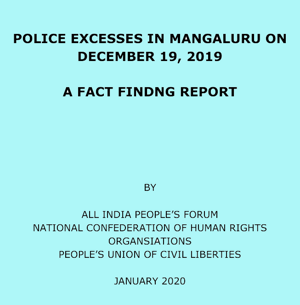
In the three-wheeler on the way to Atali, the subject of communal violence is met with silence, and then loud recriminations against politics and parties. An elderly Haryanvi woman says “The police is pampering the Muslims (baithe baithe rotiyan khila rahi hai) and imprisoning our children in jails. All the young men of the village have run away out of fear of the police, which is why I have come at this early hour from the village to Ballabhgarh for medicines.” Other passengers also started blaming political leaders and cursing Muslims. A gentleman from Sirsa interjected that the Hindus were also at fault, as everything belonging to the Muslims has been burnt and destroyed. As we reached Atali, RAF, Haryana police and CRPF personnel were visible everywhere.
The Incident
On 25 May last there was communal violence, on the pretext of a ‘dispute’ over a mosque, resulting in many Muslim homes, vehicles and fuel stores being burnt. Atali is a Hindu (Jat) majority village and all the Muslim families, fearing for their lives, took shelter in the Ballabhgarh thana for many days. The Muslims eventually returned to the village. But the same story was repeated on 1 July, this time on the pretext of a rumour that women singing kirtans in the temple next to the mosque were pelted with stones from the masjid.
In the first phase of the incident FIRs were registered against 20 people including 3 women who had attacked Muslims. The affected eyewitnesses stated that women participated actively in the attacks on Muslims.
After the 2nd phase of the attack when the AIPF team reached the village, all the Muslim families had left the village. This time 9 rioters were arrested, and Hindu youth had left the village for fear of arrest.
Atali Village
Atali is a Jat majority village with a population of about 4000. It has a Muslim population of about 500. There are dalit and OBC residents but they are very few in number. Agriculture is the chief occupation of the villagers. Most of the farmer families have a malikana possession of 4 kila (acres) to 80 kila (acres) land. Most Muslim families are workers and there are very few who have their own trade or business. The homes and life styles of the villagers appear to be prosperous. Big houses as well as comparatively small houses are equipped with modern amenities. Most homes have connections to natural gas from the company owned by Gautam Adani.
The Mosque and the Temple
At the centre of the dispute is the masjid and its neighbouring Khera Devat temple which stand immediately inside the entrance to the village (Khera is said to be the boundary of the village). About 5 years ago the Wakf board started pucca construction in the masjid and that was the starting point of the controversy. A petition was filed in the lower court, and the lower court gave its verdict in favour of the Muslim community. Despite the verdict, the Jat community of the village refused to accept the court verdict and remained adamant that construction in the masjid should be stopped.
On this issue, village elder 82 year old Sher Singh Kaliraman says that this place was originally a burial ground of the Muslims, and others agreed. How come there is a temple next to the burial ground? The villagers have no direct answer for this but from what they say the indications are that when the Muslims started using the place as a place for worship, the Kheda Devat temple was established there (a temple on the border of the village whose deity protects the village). The temple was a mere 2 sq meters in area but gradually it kept increasing in area and now it is larger than the masjid. Clearly, the script of today’s dispute was envisaged and written by Hindutva organizations decades ago.
Teaching Muslims ‘Their Place’
The attitude of many of the Jats of Atali displays their sense that violence would end if Muslims would accept their subordinate status. They say that a few Muslim families are prosperos enough to settle elsewhere, but most are so poor that they have no option but to come back to us. They also say that one kila land has been given outside the village where the Muslims can make their mosque, and it is only the ‘uppity’ Muslims who are prosperous who are unwilling to shift the mosque.
When the Muslims of the village were attacked, the first target was the prosperous Muslims and their homes, electronic goods, vehicles and other goods were destroyed and burnt. The ordinary not-so-prosperous Muslims were also not spared. In the first attack (25 May), Muslim women complained of rape; a rape case is going on against the son of Lakha Pandit.
A Complicit Government and Police
The attitude of the security forces deployed to protect the Muslims is clear from this statement of an RAF jawan resting within the masjid, “Install Bajrangbali in the lower part of this place and Mahadeo in the upper part, and all the quarrels will be resolved”. When this is the attitude, how can the Muslims feel secure? The burnt and broken homes of the Muslims are being used as shelters for the security personnel.
If, after the first phase of attacks on 25 May, the BJP Government of Haryana and administration had taken proper action, the communal forces would not have dared to launch the second phase of attacks, and the Muslims would not have had to flee the village once again.
But the administration, instead had tried to broker a deal that would allow Muslims to return as long as they agreed to stopping construction of the mosque.
The Jat community in Atali and neighbouring areas say quite openly that Muslims must live in subordination to them: “Our ancestors brought these people (Muslims) here for their help. Now they are challenging us with outside support. This won’t do”.
During the first phase of the riots, the CM Khattar visited nearby Morna, but remained silent on the violence and stayed away from Atali. With this, he conveyed his tacit blessings to the rioters.
Soon after the second phase of attacks in Atali, a small dispute between Hindus and Muslims in nearby Tikri Brahman (Palwal) turned into a communal riot, resulting in 45 people being injured, 10 of them seriously, who were referred to Delhi.
Muslims are being forced to flee their village a mere 50 kilometres from India’s capital city – and yet the Prime Minister is silent on this atrocity. Atali holds up a mirror of shame to our democracy.
(Excerpt from a report by Girija Pathak and Prem Singh Gehlawat on behalf of AIPF team that visited Atali village in Haryana)


